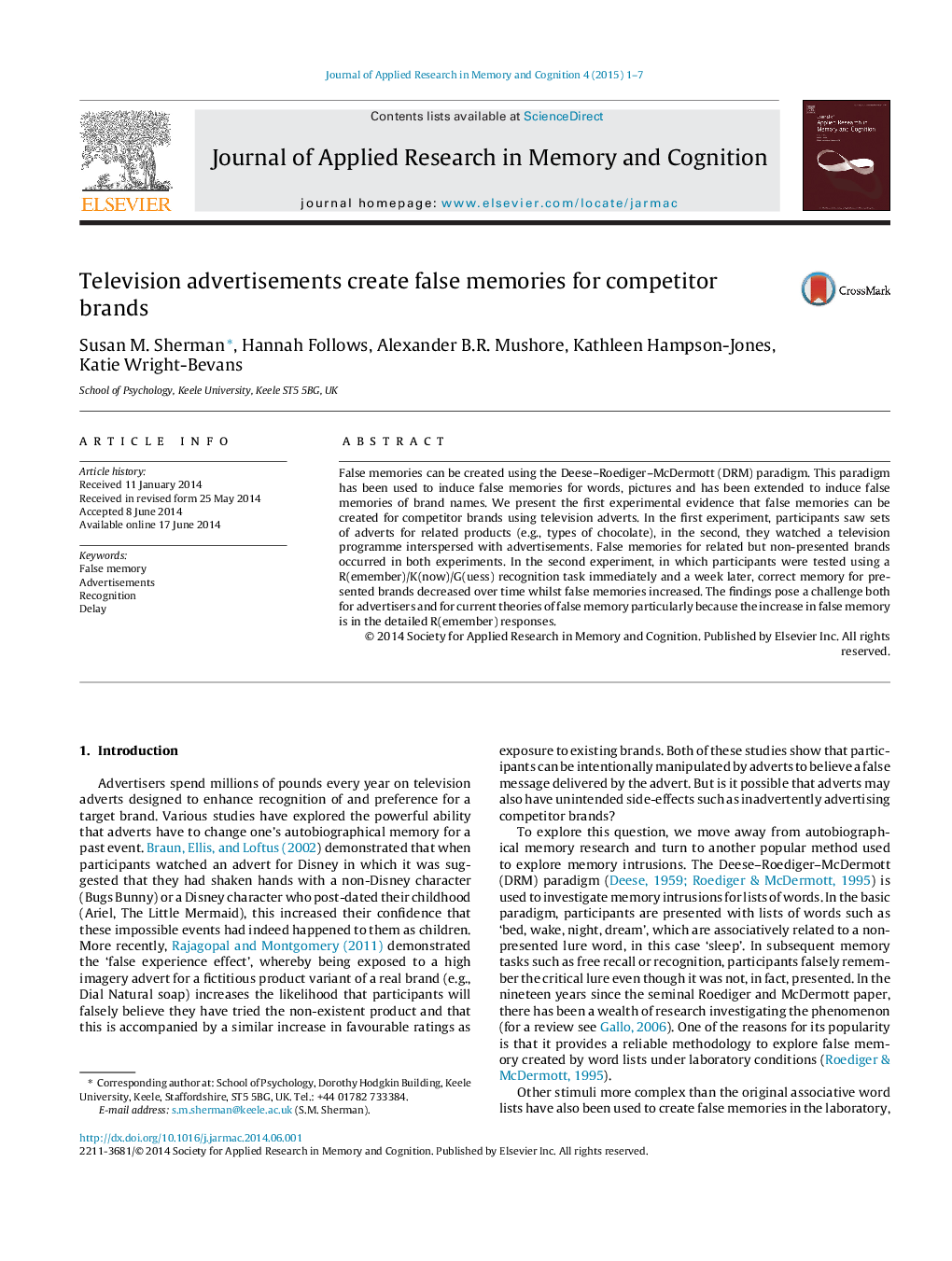| Article ID | Journal | Published Year | Pages | File Type |
|---|---|---|---|---|
| 881594 | Journal of Applied Research in Memory and Cognition | 2015 | 7 Pages |
•False memories for competitor brands can be created by advertisements.•We created false memories for competitor brands in experimental and naturalistic studies.•False memories for brands increase over time.•Competitive clutter can help your competitor get free advertising.
False memories can be created using the Deese–Roediger–McDermott (DRM) paradigm. This paradigm has been used to induce false memories for words, pictures and has been extended to induce false memories of brand names. We present the first experimental evidence that false memories can be created for competitor brands using television adverts. In the first experiment, participants saw sets of adverts for related products (e.g., types of chocolate), in the second, they watched a television programme interspersed with advertisements. False memories for related but non-presented brands occurred in both experiments. In the second experiment, in which participants were tested using a R(emember)/K(now)/G(uess) recognition task immediately and a week later, correct memory for presented brands decreased over time whilst false memories increased. The findings pose a challenge both for advertisers and for current theories of false memory particularly because the increase in false memory is in the detailed R(emember) responses.
